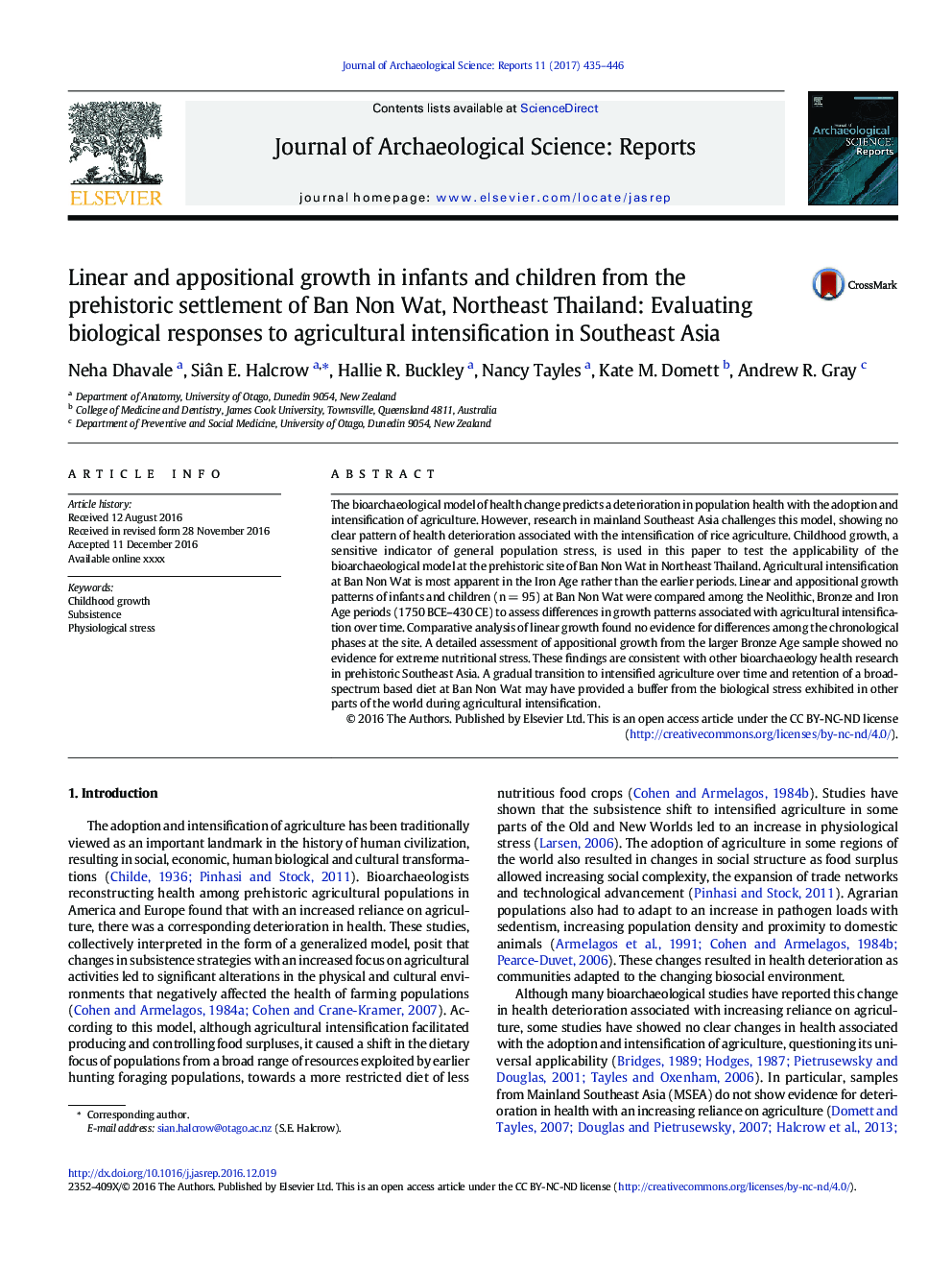| Article ID | Journal | Published Year | Pages | File Type |
|---|---|---|---|---|
| 5112577 | Journal of Archaeological Science: Reports | 2017 | 12 Pages |
Abstract
The bioarchaeological model of health change predicts a deterioration in population health with the adoption and intensification of agriculture. However, research in mainland Southeast Asia challenges this model, showing no clear pattern of health deterioration associated with the intensification of rice agriculture. Childhood growth, a sensitive indicator of general population stress, is used in this paper to test the applicability of the bioarchaeological model at the prehistoric site of Ban Non Wat in Northeast Thailand. Agricultural intensification at Ban Non Wat is most apparent in the Iron Age rather than the earlier periods. Linear and appositional growth patterns of infants and children (n = 95) at Ban Non Wat were compared among the Neolithic, Bronze and Iron Age periods (1750 BCE-430 CE) to assess differences in growth patterns associated with agricultural intensification over time. Comparative analysis of linear growth found no evidence for differences among the chronological phases at the site. A detailed assessment of appositional growth from the larger Bronze Age sample showed no evidence for extreme nutritional stress. These findings are consistent with other bioarchaeology health research in prehistoric Southeast Asia. A gradual transition to intensified agriculture over time and retention of a broad-spectrum based diet at Ban Non Wat may have provided a buffer from the biological stress exhibited in other parts of the world during agricultural intensification.
Related Topics
Social Sciences and Humanities
Arts and Humanities
History
Authors
Neha Dhavale, Siân E. Halcrow, Hallie R. Buckley, Nancy Tayles, Kate M. Domett, Andrew R. Gray,
